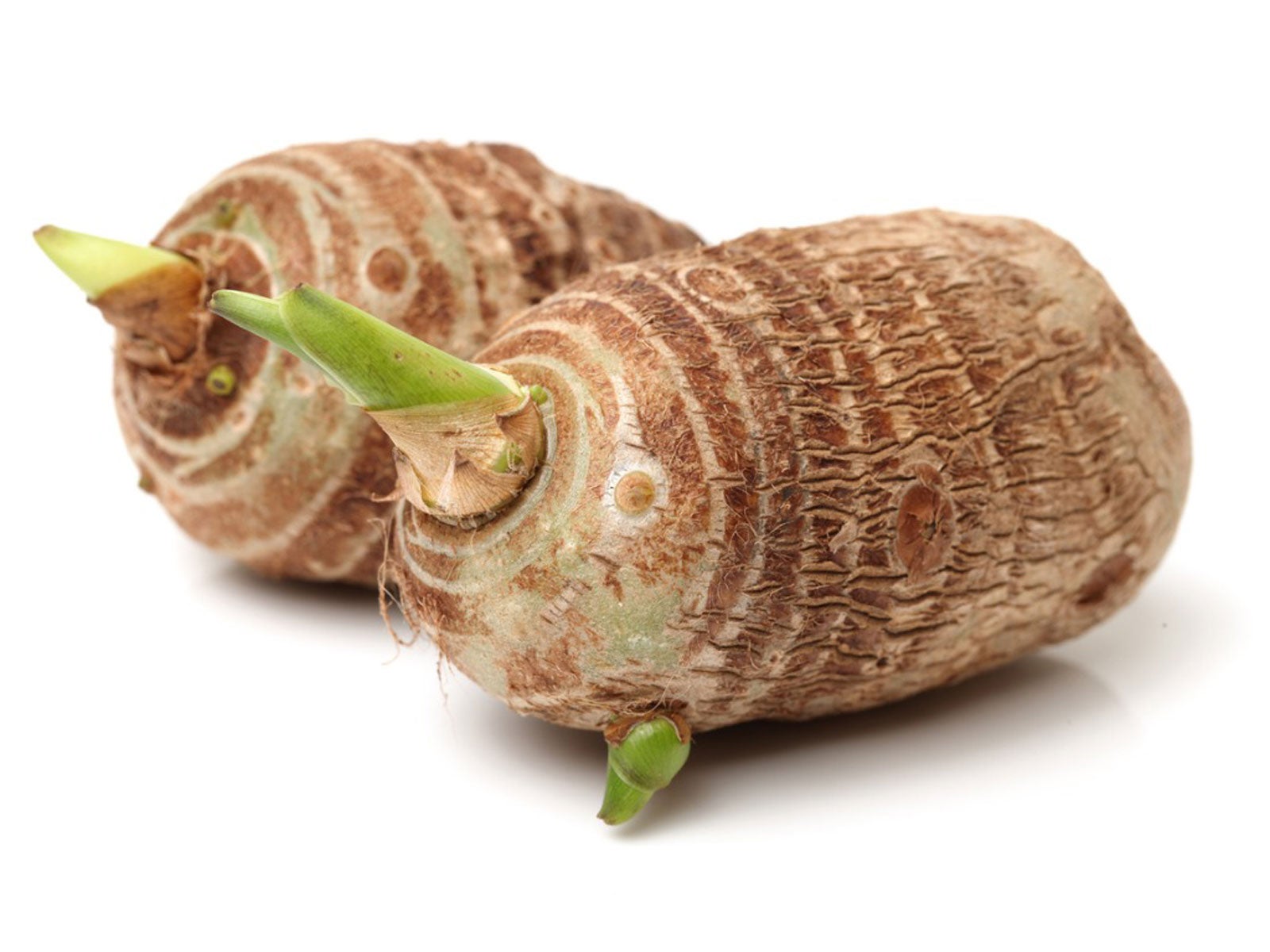
Of late, snack chips made of sweet potato, yucca, and parsnip have been all the rage – supposedly, as a healthier option to the potato chip, which is fried and loaded with salt. Another healthier option would be growing and harvesting your own taro roots and then turning them into chips. Read on to find out how to grow and harvest taro in your own garden.
Growing Edible Taro in the Garden for Food
Taro, a member of the family Araceae, is the common name under which a large number of plants reside. Within the family, there are many cultivars of edible taro varieties suited to the garden. Sometimes referred to as ‘elephant ears’ due to the plants large leaves, taro is also called ‘dasheen.’ This perennial tropical to subtropical plant is cultivated for its starchy sweet tuber. The foliage can be eaten as well and is cooked much as other greens are. It is rich in minerals and vitamins A, B, and C. In the Caribbean, the greens are famously cooked down into a dish called callaloo. The tuber is cooked and mashed into a paste, called poi, which used to be a common Hawaiian staple. The starch in the large tubers or corms of taro is very digestible, making taro flour an excellent addition to infant formulas and baby foods. It is a good source of carbohydrates and to a lesser extent, potassium and protein. Growing taro for food is considered a staple crop for many countries, but most especially in Asia. The most common species used as a food source is Colocasia esculenta.
How to Grow and Harvest Taro
As mentioned, taro is tropical to subtropical, but if you don’t live in such a climate (USDA zones 10-11), you can try growing taro in a greenhouse. The large leaves grow from 3-6 feet (1-2 m.) in height, so it will need some space. Also, patience is required, since taro needs 7 months of warm weather to mature. To get an idea of how many plants to grow, 10-15 plants per person is a good average. The plant is easily propagated via tubers, which can be obtained at some nurseries or from the grocers, especially if you have access to an Asian market. Depending upon the species, the tubers may be smooth and round or rough and fibered. Regardless, just place the tuber in an area of the garden with rich, moist, well-draining soil with a pH between 5.5 and 6.5. Set the tubers in furrows 6 inches (15 cm.) deep and cover with 2-3 inches (5-7.5 cm.) of soil, spaced 15-24 inches (38-60 cm.) apart in rows that are 40 inches (1 m.) apart. Keep the taro consistently moist; taro is often grown in wet paddies, like that of rice. Feed the taro with a high potassium organic fertilizer, compost, or compost tea. For a non-stop supply of taro, a second crop can be planted between the rows about 12 weeks before the first crop is harvested.
Harvesting Taro Roots
Within the first week, you should notice a small green stem poking up through the soil. Soon, the plant will become a thick bush that may grow a foot to up to 6 feet (2 m.), depending upon the species. As the plant grows, it will continue to send out shoots, leaves and tubers which allow you to continually harvest some of the plant without harming it. The whole process takes about 200 days from planting corms to harvest. To harvest the corms (tubers), lift them gently from the soil with a garden fork just before the first frost in the fall. The leaves may be picked as soon as the first few leaves have opened. As long as you don’t cut all the leaves, new ones will grow, giving a continuous supply of greens.
Sign up for the Gardening Know How newsletter today and receive a free copy of our e-book "How to Grow Delicious Tomatoes".

Amy Grant has been gardening for 30 years and writing for 15. A professional chef and caterer, Amy's area of expertise is culinary gardening.
